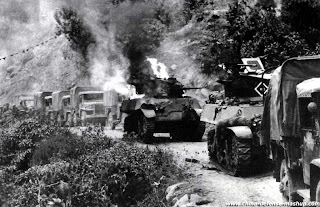http://mil.news.sina.com.cn/china/2017-06-29/doc-ifyhrxtp6324498.shtml
印军叫嚣为开战做准备 我国防部警告其汲取历史教训
2017年06月29日 15:58 国防部网站
//d1.sina.com.cn/201604/01/1414092.JPG
//d1.sina.com.cn/201604/01/1414092.JPG
新浪扶翼 行业专区
6月29日下午,国防部举行例行记者会,国防部新闻局副局长、国防部新闻发言人吴谦大校答记者问。
记者:据印度媒体6月8日报道,印陆军参谋长拉瓦特称,印度在为“2.5线战争”做准备,就是应对中国、巴基斯坦和国内的安全威胁。请问对此有何评论?
吴谦:印度陆军参谋长的言论是极其不负责任的。我们希望印军个别人能够汲取历史教训,停止发表这种叫嚣战争的危险言论。
https://www.samaa.tv/international/...tern-warning-to-india-learn-from-1962-defeat/
China issues stern warning to India: Learn from 1962 defeat
June 29, 2017
By: Samaa Web Desk
Published in Global
Be the first to comment!
china
SIKKIM: China responded to Indian threats with a stern warning on Thursday–Learn from 1962 defeat and stop clamouring for war.
According to the spokesperson of the Peoples Liberation Army (PLA), Beijing has reacted sharply to Indian Army chief’s recent statement in which he said that India was ready to take on China, Pakistan and internal security threats.
“Such rhetoric is extremely irresponsible. We hope (the) particular person in the Indian Army could learn from historical lessons and stop such clamouring for war,” said Wu Qiao, PLA spokesperson at a defense ministry briefing.
Qiao further said that Indian border troops had entered the Sikkim sector of the India-China borders and had tried to disrupt the normal activities of the Chinese troops.
“We carried out appropriate responses to halt these activities to safeguard our national sovereignty and territorial integrity,” he said.
He said that China had made it clear to India to withdraw its troops from the sector and correct its wrongdoing.
“We urged the Indian side to withdraw troops… This is the precondition for the settlement of the incident and also the basis for us to conduct a meaningful dialogue,” foreign ministry spokesperson Lu Kang said.
China blocked the entry of Indian pilgrims into Kailash-Mansarovar in Tibet from the Nathu La pass on Tuesday, accusing Indian soldiers of crossing over into the Sikkim sector.
http://www.hindustantimes.com/world...ing-for-war/story-SsjgL5nMONHpZ50dvdwuCP.html
China’s PLA warns India: Learn lessons from 1962 defeat, stop clamouring for war
China warned that the precondition for settling the current stand-off in the Sikkim sector is that India withdraws its troops immediately.
world Updated: Jun 29, 2017 18:12 IST
Sutirtho Patranobis
Sutirtho Patranobis
Hindustan Times, Beijing
1962 war
People's Liberation Army soldiers and armoured vehicles equipped with anti-aircraft artillery at Tiananmen Square during a military parade.(Reuters File)
India should learn lessons from its defeat in 1962 and stop clamouring for a war, China warned on Thursday, saying the precondition for settling the current stand-off in the Sikkim sector is that New Delhi withdraws its troops immediately.
China said its troops were building a road in its own territory and not on land that belonged to Bhutan.
People’s Liberation Army (PLA) spokesperson Wu Qian was reacting to Indian Army chief Gen Bipin Rawat’s statement that India was ready to take on China, Pakistan and internal security issues.
“Such rhetoric is extremely irresponsible. We hope (the) particular person in the Indian Army could learn from historical lessons and stop such clamouring for war,” he said at the monthly defence ministry briefing in Beijing, indicating China’s aggressive position in the current dispute.
The topic of a new 35-tonne tank, built and tested by China in the Tibet Autonomous Region (TAR), came up at the briefing, after a Chinese journalist asked whether it was better than its Indian counterparts and whether China will use it against India in a war.
“A type of tank undertook trial on the (Tibet) plateau. The purpose of is to test the parameters of the equipment and is not targeted against any country,” Wu said.
He said PLA troops responded to India troops trespassing into Chinese territory.
“The Indian border troop personnel have entered the Chinese territory in the Sikkim sector of the India-China borders. They tried to stop the normal activities of the Chinese border defence forces in the Donglang region. We carried out appropriate responses to halt these activities to safeguard our national sovereignty and territorial integrity,” Wu said.
When asked about the China-Bhutan boundary dispute in the Donglang area, Wu said it wasn’t true that PLA soldiers were operating in Bhutan.
“I have to correct you when you say that Chinese troops entered Bhutan territory.
“The personnel have been operating on the Chinese territory. We have made very clear to the Indian side that they should correct their wrong doing and withdraw their personnel from the Chinese territory,” he said.
The Donglang or Doklam area is located at the narrow but strategic tri-junction of India, China and Bhutan and not far from Nathu La pass. It is under Chinese control and lies within the TAR but is claimed by Bhutan. Thimphu doesn’t have diplomatic ties with Beijing, and the border dispute remains despite 24 rounds of negotiations between the two.
In separate press briefing, the foreign ministry said India must withdraw troops from the area to resolve the dispute.
“We urged the Indian side to withdraw troops... This is the precondition for the settlement of the incident and also the basis for us to conduct a meaningful dialogue,” spokesperson Lu Kang said.
http://www.hindustantimes.com/india...ozer-report/story-va4c8vuXm8feN0uNyGuTGM.html
Old Indian bunker in Sikkim removed by China using bulldozer: Report
The incident that broke out in the first week of June in Doka La general area in Sikkim had led to a face-off between the two forces, triggering tension in the Sikkim section of the India-China border
india Updated: Jun 28, 2017 20:00 IST
Press Trust of India
India-China border
The first batch of Kailash Mansarovar pilgrims comprising about 50 people returned from Nathu La border post as the stand-off between India and China continues(HT File Photo)
China has removed an old bunker of the Indian Army located at the tri-junction of India, China and Bhutan in Sikkim by using a bulldozer after the Indian side refused to accede to its request, according to official sources.
The incident that broke out in the first week of June in Doka La general area in Sikkim had led to a face-off between the two forces, triggering tension in the Sikkim section of the India-China border, the sources said on Wednesday.
The forcible removal of the old bunker by using heavy machinery like a bulldozer came when the Indian side did not agree to a request by the Chinese authorities to dismantle it, the sources said.
China is believed to have not taken kindly to India building many new bunkers and upgrading older ones along the border in Sikkim in the recent past to augment its defences against the People’s Liberation Army (PLA), the sources said.
Of the 3,488-km-long India-China border from Jammu and Kashmir to Arunachal Pradesh, a 220-km section falls in Sikkim.
Beijing is also upset with New Delhi over the recent visit of the Dalai Lama to Arunachal Pradesh, the sources said, adding they were also trying to escalate tension in the forward areas, including in Sikkim, even though the border in the northeastern state is demarcated.
The Sikkim government has also sent a report to the central government giving details of the situation along the border following the stand-off in Doka La.
The first batch of Kailash Mansarovar pilgrims comprising about 50 people returned from Nathu La border post as the stand-off between India and China continues.
The pilgrims returned to Gangtok on June 23 after staying in Nathu La for three days awaiting permission from the Chinese side to undertake the onward journey.
The second batch of the pilgrims did not move from Gangtok while pilgrims were told to go home as the Kailash Mansarovar pilgrimage is unlikely to continue this year via Nathu La.
The Sikkim route to Mansarovar, which is in Tibet, was thrown open to public in 2015.
The visas for the third batch, comprising about 50 pilgrims, were not given yet. A total of 8-10 batches were supposed to go for the pilgrimage through Nathu La this year.
Union home secretary Rajiv Mehrishi said yesterday that 100 pilgrims were sent back by China despite they having a Chinese visa.
The sources said the Chinese side has mentioned a broken bridge as being the reason for the pilgrims not being able to cross into Tibet for the annual yatra.
Sikkim is a part of the middle sector and experts have been warning the government of increased Chinese activities in this area.
China has termed the construction of a road in the Sikkim sector as “legitimate”, asserting that it was being built on Chinese territory that neither belongs to India nor Bhutan and no other country had the right to interfere.
China has lodged a protest with India over the alleged “crossing of boundary” by its troops in the Sikkim sector and demanded their immediate withdrawal, as Beijing warned that future visits of Indian pilgrims to Kailash Mansarovar will depend on the resolution of the standoff.
The last such transgression had happened in Sikkim in November 2008 when Chinese soldiers destroyed some makeshift Indian Army bunkers there.
http://news.sina.com.cn/o/2017-06-29/doc-ifyhryex5482156.shtml
陆慷现场展示照片证据:清楚看到印军越界入境
2017年06月29日19:57 外交部网站
陆慷现场展示照片证据:清楚看到印军越界入境
原标题:2017年6月29日外交部发言人陆慷主持例行记者会
(印度边防人员在中印边界锡金段越过两国承认的边界线进入中国境内)
问:6月28日,《印度斯坦时报》报道称,印度陆军参谋长拉瓦特就近期中印边防部队之间发生的对峙事件明确表示,“印领土并未遭受入侵”。这与印媒此前一直报道的“中国军队越过锡金段边界线入侵印度领土”完全不同。请问中方对此有何评论?
答:我们已经在这里明确指出过,这次事件的真相是,印度边防部队人员非法越过了中印边界锡金段进入了中国境内。你刚才所说的印陆军参谋长的表态印证了此前印度媒体有关报道不实。真相是难以持续掩盖的。我们再次要求印方遵守历史界约规定,尊重中国的领土主权,立即将越界部队撤回到边界线的印方一侧,避免事态越演越烈,陷于更大的被动。
问:中方认为印军在中印边界锡金段越界进入中国领土违反了国际法和国际关系的基本准则。请问中方认定印军越界的法律依据是什么?
答:中印边界锡金段具有明确的法律依据。根据1890年《中英会议藏印条约》第一款规定,西藏与锡金以流入锡金梯斯塔河及其支流的水流和流入西藏莫竹河及向北流入其它西藏境内河流的水流间的分水岭为边界。这段边界线起自与不丹交界的吉姆马珍山,并沿上述分水岭行至与尼泊尔边界。根据这一条约规定,洞朗地区属于中国领土,印军越界地区的分水岭非常清楚。印军越界进入了中国领土是不可否认的事实。印军此举违背了历史界约,也违反了印度历届政府的承诺。
在这里,我可以给大家展示一下中方现在掌握的,此次印度边防人员非法越过中印边界锡金段进入中国领土的有关照片。可能大家在这里没法看得很清楚,我们将在今天记者会后,在外交部网站公布这些照片,大家注意仔细查看。从图中可以清楚地看到,印度士兵和车辆越过了作为边界线的分水岭,进入到中国境内。
问:不丹驻印度大使昨天称,不丹政府已经向中方提交了表示抗议的外交照会,要求中方停止在洞朗地区修路。中方能否证实收到了不方提交的外交照会?
答:洞郎地区历来属于中国领土。这个昨天我已经在这说过,是不容置疑的事实,在历史、法理和现地三方面都有充分依据。中方在洞郎地区开展的一些活动是在自己领土上的主权行为,完全合法,完全正当。
问:中印双方就解决此事作了什么样的沟通,双方是否会通过外交渠道解决此事?
答:印度边防人员非法越界事件发生以来,中方已经在北京和新德里多次向印方提出严正交涉。双方外交沟通的渠道是畅通的。我们敦促印方立即将越界的边防人员撤回边界线印方一侧,这是解决此次事件的前提,也是双方进行任何有意义对话的基础。
问:有一份法案正提交美国参议院。该法案将允许美国军舰停靠台湾港口。你对此有何评论?
答:中方在台湾问题上的立场,我相信你非常清楚。我们对美国参议院军委会通过的有关法案表示严重关切并坚决反对。我们就美方在涉台问题上的错误行为向美方提出过严正交涉。我必须再次强调,台湾问题事关中国主权和领土完整,纯属中国内政。美国参议院军委会上述法案涉台内容严重违反中美三个联合公报原则,是对中国内政的干涉,中方不可能接受。我们敦促美方恪守在台湾问题上向中方作出的承诺,立即停止美台军事联系和售台武器,避免给中美关系和中美在更广泛领域的合作造成损害。
问:据报道,第23届“兰洽会”将于7月6日至9日在甘肃兰州举办。本届兰洽会将突出“一带一路”建设,尼泊尔是主宾国之一。请问尼方是否有领导人出席活动?能否进一步介绍中尼双边交往及各领域务实合作情况?
答:中方一直视尼泊尔为“一带一路”建设的重要合作伙伴,欢迎尼方担任第23届“兰洽会”主宾国。双方正就尼高级别代表团与会事宜保持沟通。
中尼是传统友好邻邦。近年来,两国各领域合作发展迅速,双方友好关系不断深化。今年上半年,时任尼泊尔总理普拉昌达来华出席博鳌亚洲论坛2017年年会,副总理马哈拉来华出席“一带一路”国际合作高峰论坛高级别会议。两国领导人就进一步深化双方在互联互通、自由贸易、灾后重建等领域合作达成广泛共识。两国并签署政府间关于“一带一路”合作的谅解备忘录。不久前,双方举行了富有成效的外交磋商。中方愿以共建“一带一路”为契机,不断巩固中尼传统友谊,拓展互利合作,推动两国世代友好的全面合作伙伴关系不断向前发展。
问:《环球时报》文章称,澳大利亚政府一直在骚扰和监视中国公民和中国使馆。你能否证实?是否对澳安全部门就在澳中国公民采取的这种行为表示担忧?
答:我也注意到了相关报道。我可以告诉你的是,我们对任何其他国家损害中国国家安全的活动始终保持着高度警惕,并会继续采取必要应对措施。
不过,你提到的这篇报道也让我想起了近一段时间以来,澳大利亚境内一些媒体炒作的所谓中国间谍的报道舆论。我倒是很有兴趣,我不知道你有没有可能去问问,那些在所谓中国间谍问题上嚷嚷得比较大声的那些澳大利亚媒体,他们怎么看《环球时报》这篇报道。
问:哥伦比亚总统桑托斯和哥伦比亚革命武装力量最高领袖隆多尼奥近日在梅塔省共同出席了哥革命武装力量完成解除武装仪式。桑托斯总统表示,哥革命武装力量解除武装工作已圆满结束,这标志着哥和平成为不可逆转的现实,哥揭开冲突后重建的新篇章。中方对此有何评论?
答:中方对哥伦比亚国内和平进程取得的这一重大阶段性进展表示祝贺,对有关各方为此所做的不懈努力表示赞赏。中方将继续坚定支持哥国内和平进程,希望新的和平协议得到全面、顺利执行,我们衷心祝愿哥伦比亚人民早日迎来全面和平。
问:菲律宾方面周三称,中国向其捐助了上千支枪支,帮助他们反恐。中方是否还会向菲律宾提供其他援助?
答:我相信你可能已经注意到了有关报道,包括杜特尔特总统和中国驻菲律宾大使的有关表态。
恐怖主义是人类社会公敌。当前菲律宾政府正在马拉维地区全力打击恐怖主义。我们多次强调过,中方坚定支持杜特尔特总统领导的菲律宾政府打击恐怖主义的努力。正如你所说,中方刚刚向菲方提供了一些援助,我们会继续在力所能及的范围内向菲方提供支持。
责任编辑:李鹏
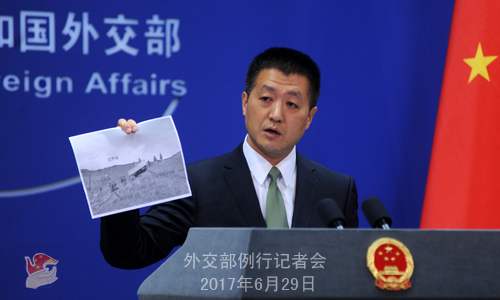
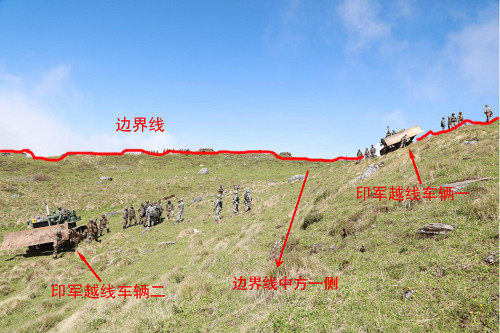
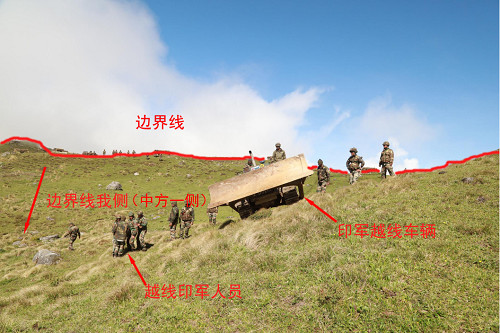
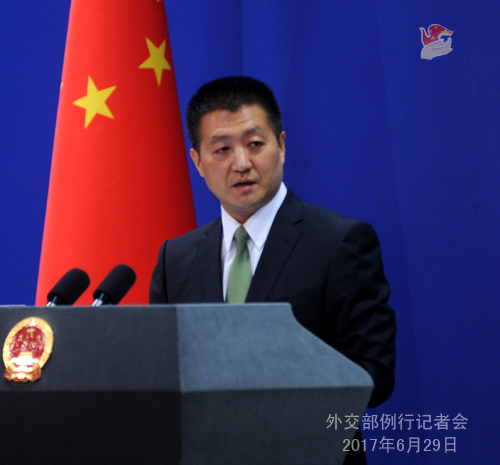
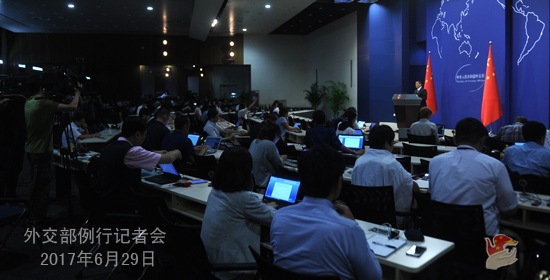
印军叫嚣为开战做准备 我国防部警告其汲取历史教训
2017年06月29日 15:58 国防部网站
//d1.sina.com.cn/201604/01/1414092.JPG
//d1.sina.com.cn/201604/01/1414092.JPG
新浪扶翼 行业专区
6月29日下午,国防部举行例行记者会,国防部新闻局副局长、国防部新闻发言人吴谦大校答记者问。
记者:据印度媒体6月8日报道,印陆军参谋长拉瓦特称,印度在为“2.5线战争”做准备,就是应对中国、巴基斯坦和国内的安全威胁。请问对此有何评论?
吴谦:印度陆军参谋长的言论是极其不负责任的。我们希望印军个别人能够汲取历史教训,停止发表这种叫嚣战争的危险言论。
https://www.samaa.tv/international/...tern-warning-to-india-learn-from-1962-defeat/
China issues stern warning to India: Learn from 1962 defeat
June 29, 2017
By: Samaa Web Desk
Published in Global
Be the first to comment!
china
SIKKIM: China responded to Indian threats with a stern warning on Thursday–Learn from 1962 defeat and stop clamouring for war.
According to the spokesperson of the Peoples Liberation Army (PLA), Beijing has reacted sharply to Indian Army chief’s recent statement in which he said that India was ready to take on China, Pakistan and internal security threats.
“Such rhetoric is extremely irresponsible. We hope (the) particular person in the Indian Army could learn from historical lessons and stop such clamouring for war,” said Wu Qiao, PLA spokesperson at a defense ministry briefing.
Qiao further said that Indian border troops had entered the Sikkim sector of the India-China borders and had tried to disrupt the normal activities of the Chinese troops.
“We carried out appropriate responses to halt these activities to safeguard our national sovereignty and territorial integrity,” he said.
He said that China had made it clear to India to withdraw its troops from the sector and correct its wrongdoing.
“We urged the Indian side to withdraw troops… This is the precondition for the settlement of the incident and also the basis for us to conduct a meaningful dialogue,” foreign ministry spokesperson Lu Kang said.
China blocked the entry of Indian pilgrims into Kailash-Mansarovar in Tibet from the Nathu La pass on Tuesday, accusing Indian soldiers of crossing over into the Sikkim sector.
http://www.hindustantimes.com/world...ing-for-war/story-SsjgL5nMONHpZ50dvdwuCP.html
China’s PLA warns India: Learn lessons from 1962 defeat, stop clamouring for war
China warned that the precondition for settling the current stand-off in the Sikkim sector is that India withdraws its troops immediately.
world Updated: Jun 29, 2017 18:12 IST
Sutirtho Patranobis
Sutirtho Patranobis
Hindustan Times, Beijing
1962 war
People's Liberation Army soldiers and armoured vehicles equipped with anti-aircraft artillery at Tiananmen Square during a military parade.(Reuters File)
India should learn lessons from its defeat in 1962 and stop clamouring for a war, China warned on Thursday, saying the precondition for settling the current stand-off in the Sikkim sector is that New Delhi withdraws its troops immediately.
China said its troops were building a road in its own territory and not on land that belonged to Bhutan.
People’s Liberation Army (PLA) spokesperson Wu Qian was reacting to Indian Army chief Gen Bipin Rawat’s statement that India was ready to take on China, Pakistan and internal security issues.
“Such rhetoric is extremely irresponsible. We hope (the) particular person in the Indian Army could learn from historical lessons and stop such clamouring for war,” he said at the monthly defence ministry briefing in Beijing, indicating China’s aggressive position in the current dispute.
The topic of a new 35-tonne tank, built and tested by China in the Tibet Autonomous Region (TAR), came up at the briefing, after a Chinese journalist asked whether it was better than its Indian counterparts and whether China will use it against India in a war.
“A type of tank undertook trial on the (Tibet) plateau. The purpose of is to test the parameters of the equipment and is not targeted against any country,” Wu said.
He said PLA troops responded to India troops trespassing into Chinese territory.
“The Indian border troop personnel have entered the Chinese territory in the Sikkim sector of the India-China borders. They tried to stop the normal activities of the Chinese border defence forces in the Donglang region. We carried out appropriate responses to halt these activities to safeguard our national sovereignty and territorial integrity,” Wu said.
When asked about the China-Bhutan boundary dispute in the Donglang area, Wu said it wasn’t true that PLA soldiers were operating in Bhutan.
“I have to correct you when you say that Chinese troops entered Bhutan territory.
“The personnel have been operating on the Chinese territory. We have made very clear to the Indian side that they should correct their wrong doing and withdraw their personnel from the Chinese territory,” he said.
The Donglang or Doklam area is located at the narrow but strategic tri-junction of India, China and Bhutan and not far from Nathu La pass. It is under Chinese control and lies within the TAR but is claimed by Bhutan. Thimphu doesn’t have diplomatic ties with Beijing, and the border dispute remains despite 24 rounds of negotiations between the two.
In separate press briefing, the foreign ministry said India must withdraw troops from the area to resolve the dispute.
“We urged the Indian side to withdraw troops... This is the precondition for the settlement of the incident and also the basis for us to conduct a meaningful dialogue,” spokesperson Lu Kang said.
http://www.hindustantimes.com/india...ozer-report/story-va4c8vuXm8feN0uNyGuTGM.html
Old Indian bunker in Sikkim removed by China using bulldozer: Report
The incident that broke out in the first week of June in Doka La general area in Sikkim had led to a face-off between the two forces, triggering tension in the Sikkim section of the India-China border
india Updated: Jun 28, 2017 20:00 IST
Press Trust of India
India-China border
The first batch of Kailash Mansarovar pilgrims comprising about 50 people returned from Nathu La border post as the stand-off between India and China continues(HT File Photo)
China has removed an old bunker of the Indian Army located at the tri-junction of India, China and Bhutan in Sikkim by using a bulldozer after the Indian side refused to accede to its request, according to official sources.
The incident that broke out in the first week of June in Doka La general area in Sikkim had led to a face-off between the two forces, triggering tension in the Sikkim section of the India-China border, the sources said on Wednesday.
The forcible removal of the old bunker by using heavy machinery like a bulldozer came when the Indian side did not agree to a request by the Chinese authorities to dismantle it, the sources said.
China is believed to have not taken kindly to India building many new bunkers and upgrading older ones along the border in Sikkim in the recent past to augment its defences against the People’s Liberation Army (PLA), the sources said.
Of the 3,488-km-long India-China border from Jammu and Kashmir to Arunachal Pradesh, a 220-km section falls in Sikkim.
Beijing is also upset with New Delhi over the recent visit of the Dalai Lama to Arunachal Pradesh, the sources said, adding they were also trying to escalate tension in the forward areas, including in Sikkim, even though the border in the northeastern state is demarcated.
The Sikkim government has also sent a report to the central government giving details of the situation along the border following the stand-off in Doka La.
The first batch of Kailash Mansarovar pilgrims comprising about 50 people returned from Nathu La border post as the stand-off between India and China continues.
The pilgrims returned to Gangtok on June 23 after staying in Nathu La for three days awaiting permission from the Chinese side to undertake the onward journey.
The second batch of the pilgrims did not move from Gangtok while pilgrims were told to go home as the Kailash Mansarovar pilgrimage is unlikely to continue this year via Nathu La.
The Sikkim route to Mansarovar, which is in Tibet, was thrown open to public in 2015.
The visas for the third batch, comprising about 50 pilgrims, were not given yet. A total of 8-10 batches were supposed to go for the pilgrimage through Nathu La this year.
Union home secretary Rajiv Mehrishi said yesterday that 100 pilgrims were sent back by China despite they having a Chinese visa.
The sources said the Chinese side has mentioned a broken bridge as being the reason for the pilgrims not being able to cross into Tibet for the annual yatra.
Sikkim is a part of the middle sector and experts have been warning the government of increased Chinese activities in this area.
China has termed the construction of a road in the Sikkim sector as “legitimate”, asserting that it was being built on Chinese territory that neither belongs to India nor Bhutan and no other country had the right to interfere.
China has lodged a protest with India over the alleged “crossing of boundary” by its troops in the Sikkim sector and demanded their immediate withdrawal, as Beijing warned that future visits of Indian pilgrims to Kailash Mansarovar will depend on the resolution of the standoff.
The last such transgression had happened in Sikkim in November 2008 when Chinese soldiers destroyed some makeshift Indian Army bunkers there.
http://news.sina.com.cn/o/2017-06-29/doc-ifyhryex5482156.shtml
陆慷现场展示照片证据:清楚看到印军越界入境
2017年06月29日19:57 外交部网站
陆慷现场展示照片证据:清楚看到印军越界入境
原标题:2017年6月29日外交部发言人陆慷主持例行记者会
(印度边防人员在中印边界锡金段越过两国承认的边界线进入中国境内)
问:6月28日,《印度斯坦时报》报道称,印度陆军参谋长拉瓦特就近期中印边防部队之间发生的对峙事件明确表示,“印领土并未遭受入侵”。这与印媒此前一直报道的“中国军队越过锡金段边界线入侵印度领土”完全不同。请问中方对此有何评论?
答:我们已经在这里明确指出过,这次事件的真相是,印度边防部队人员非法越过了中印边界锡金段进入了中国境内。你刚才所说的印陆军参谋长的表态印证了此前印度媒体有关报道不实。真相是难以持续掩盖的。我们再次要求印方遵守历史界约规定,尊重中国的领土主权,立即将越界部队撤回到边界线的印方一侧,避免事态越演越烈,陷于更大的被动。
问:中方认为印军在中印边界锡金段越界进入中国领土违反了国际法和国际关系的基本准则。请问中方认定印军越界的法律依据是什么?
答:中印边界锡金段具有明确的法律依据。根据1890年《中英会议藏印条约》第一款规定,西藏与锡金以流入锡金梯斯塔河及其支流的水流和流入西藏莫竹河及向北流入其它西藏境内河流的水流间的分水岭为边界。这段边界线起自与不丹交界的吉姆马珍山,并沿上述分水岭行至与尼泊尔边界。根据这一条约规定,洞朗地区属于中国领土,印军越界地区的分水岭非常清楚。印军越界进入了中国领土是不可否认的事实。印军此举违背了历史界约,也违反了印度历届政府的承诺。
在这里,我可以给大家展示一下中方现在掌握的,此次印度边防人员非法越过中印边界锡金段进入中国领土的有关照片。可能大家在这里没法看得很清楚,我们将在今天记者会后,在外交部网站公布这些照片,大家注意仔细查看。从图中可以清楚地看到,印度士兵和车辆越过了作为边界线的分水岭,进入到中国境内。
问:不丹驻印度大使昨天称,不丹政府已经向中方提交了表示抗议的外交照会,要求中方停止在洞朗地区修路。中方能否证实收到了不方提交的外交照会?
答:洞郎地区历来属于中国领土。这个昨天我已经在这说过,是不容置疑的事实,在历史、法理和现地三方面都有充分依据。中方在洞郎地区开展的一些活动是在自己领土上的主权行为,完全合法,完全正当。
问:中印双方就解决此事作了什么样的沟通,双方是否会通过外交渠道解决此事?
答:印度边防人员非法越界事件发生以来,中方已经在北京和新德里多次向印方提出严正交涉。双方外交沟通的渠道是畅通的。我们敦促印方立即将越界的边防人员撤回边界线印方一侧,这是解决此次事件的前提,也是双方进行任何有意义对话的基础。
问:有一份法案正提交美国参议院。该法案将允许美国军舰停靠台湾港口。你对此有何评论?
答:中方在台湾问题上的立场,我相信你非常清楚。我们对美国参议院军委会通过的有关法案表示严重关切并坚决反对。我们就美方在涉台问题上的错误行为向美方提出过严正交涉。我必须再次强调,台湾问题事关中国主权和领土完整,纯属中国内政。美国参议院军委会上述法案涉台内容严重违反中美三个联合公报原则,是对中国内政的干涉,中方不可能接受。我们敦促美方恪守在台湾问题上向中方作出的承诺,立即停止美台军事联系和售台武器,避免给中美关系和中美在更广泛领域的合作造成损害。
问:据报道,第23届“兰洽会”将于7月6日至9日在甘肃兰州举办。本届兰洽会将突出“一带一路”建设,尼泊尔是主宾国之一。请问尼方是否有领导人出席活动?能否进一步介绍中尼双边交往及各领域务实合作情况?
答:中方一直视尼泊尔为“一带一路”建设的重要合作伙伴,欢迎尼方担任第23届“兰洽会”主宾国。双方正就尼高级别代表团与会事宜保持沟通。
中尼是传统友好邻邦。近年来,两国各领域合作发展迅速,双方友好关系不断深化。今年上半年,时任尼泊尔总理普拉昌达来华出席博鳌亚洲论坛2017年年会,副总理马哈拉来华出席“一带一路”国际合作高峰论坛高级别会议。两国领导人就进一步深化双方在互联互通、自由贸易、灾后重建等领域合作达成广泛共识。两国并签署政府间关于“一带一路”合作的谅解备忘录。不久前,双方举行了富有成效的外交磋商。中方愿以共建“一带一路”为契机,不断巩固中尼传统友谊,拓展互利合作,推动两国世代友好的全面合作伙伴关系不断向前发展。
问:《环球时报》文章称,澳大利亚政府一直在骚扰和监视中国公民和中国使馆。你能否证实?是否对澳安全部门就在澳中国公民采取的这种行为表示担忧?
答:我也注意到了相关报道。我可以告诉你的是,我们对任何其他国家损害中国国家安全的活动始终保持着高度警惕,并会继续采取必要应对措施。
不过,你提到的这篇报道也让我想起了近一段时间以来,澳大利亚境内一些媒体炒作的所谓中国间谍的报道舆论。我倒是很有兴趣,我不知道你有没有可能去问问,那些在所谓中国间谍问题上嚷嚷得比较大声的那些澳大利亚媒体,他们怎么看《环球时报》这篇报道。
问:哥伦比亚总统桑托斯和哥伦比亚革命武装力量最高领袖隆多尼奥近日在梅塔省共同出席了哥革命武装力量完成解除武装仪式。桑托斯总统表示,哥革命武装力量解除武装工作已圆满结束,这标志着哥和平成为不可逆转的现实,哥揭开冲突后重建的新篇章。中方对此有何评论?
答:中方对哥伦比亚国内和平进程取得的这一重大阶段性进展表示祝贺,对有关各方为此所做的不懈努力表示赞赏。中方将继续坚定支持哥国内和平进程,希望新的和平协议得到全面、顺利执行,我们衷心祝愿哥伦比亚人民早日迎来全面和平。
问:菲律宾方面周三称,中国向其捐助了上千支枪支,帮助他们反恐。中方是否还会向菲律宾提供其他援助?
答:我相信你可能已经注意到了有关报道,包括杜特尔特总统和中国驻菲律宾大使的有关表态。
恐怖主义是人类社会公敌。当前菲律宾政府正在马拉维地区全力打击恐怖主义。我们多次强调过,中方坚定支持杜特尔特总统领导的菲律宾政府打击恐怖主义的努力。正如你所说,中方刚刚向菲方提供了一些援助,我们会继续在力所能及的范围内向菲方提供支持。
责任编辑:李鹏






